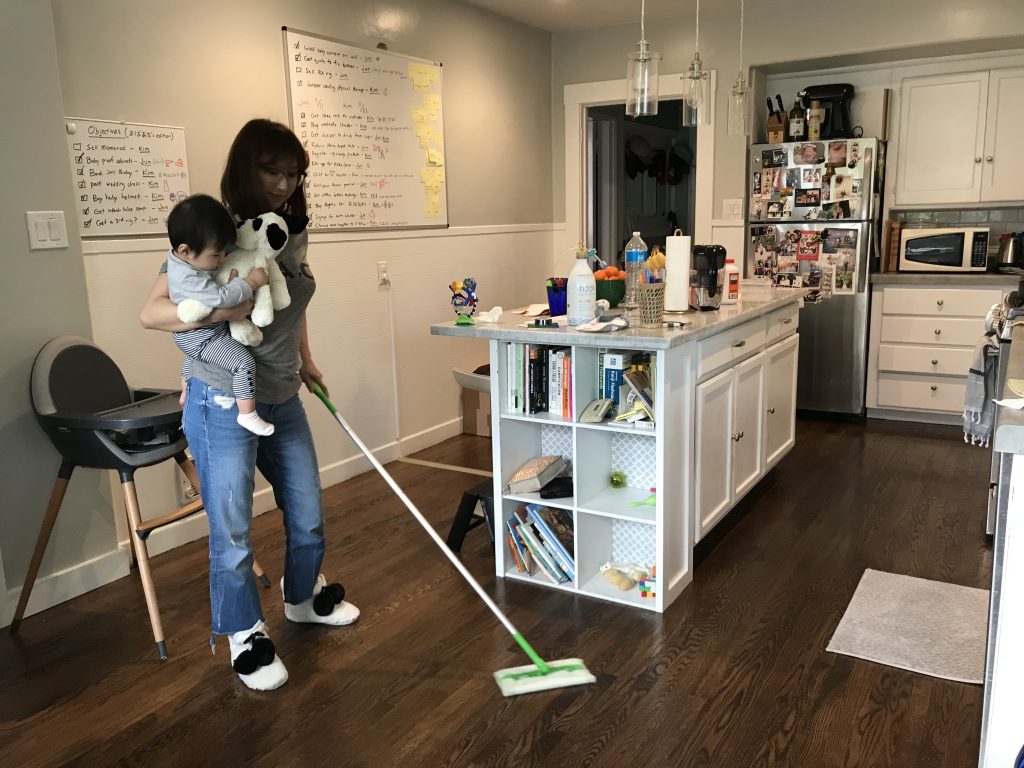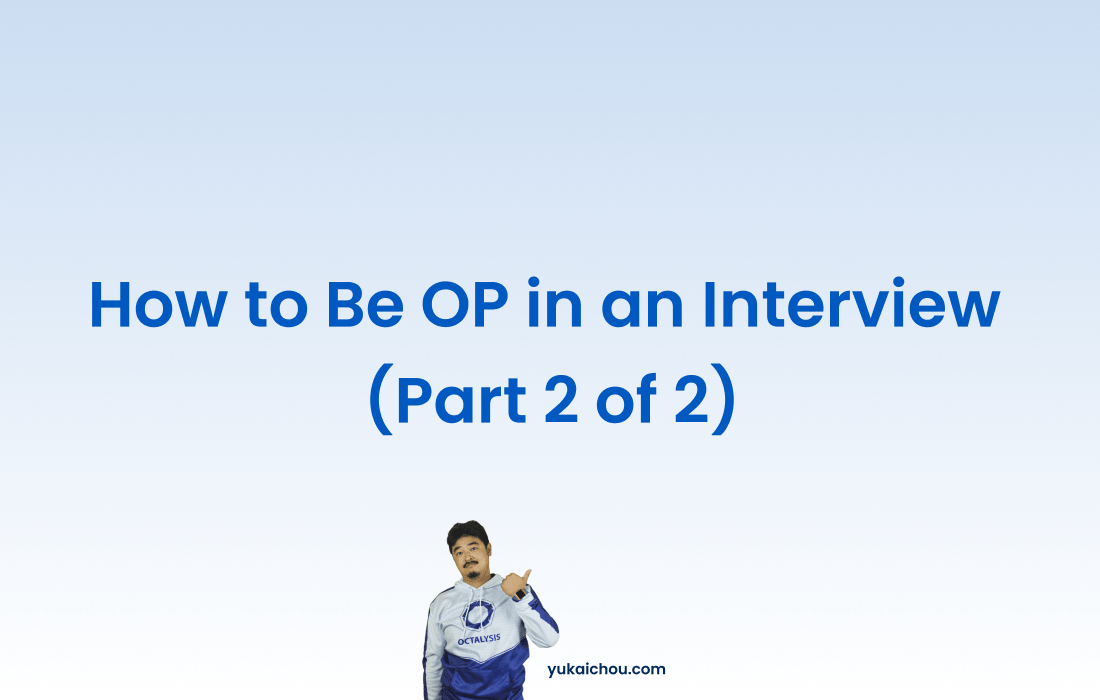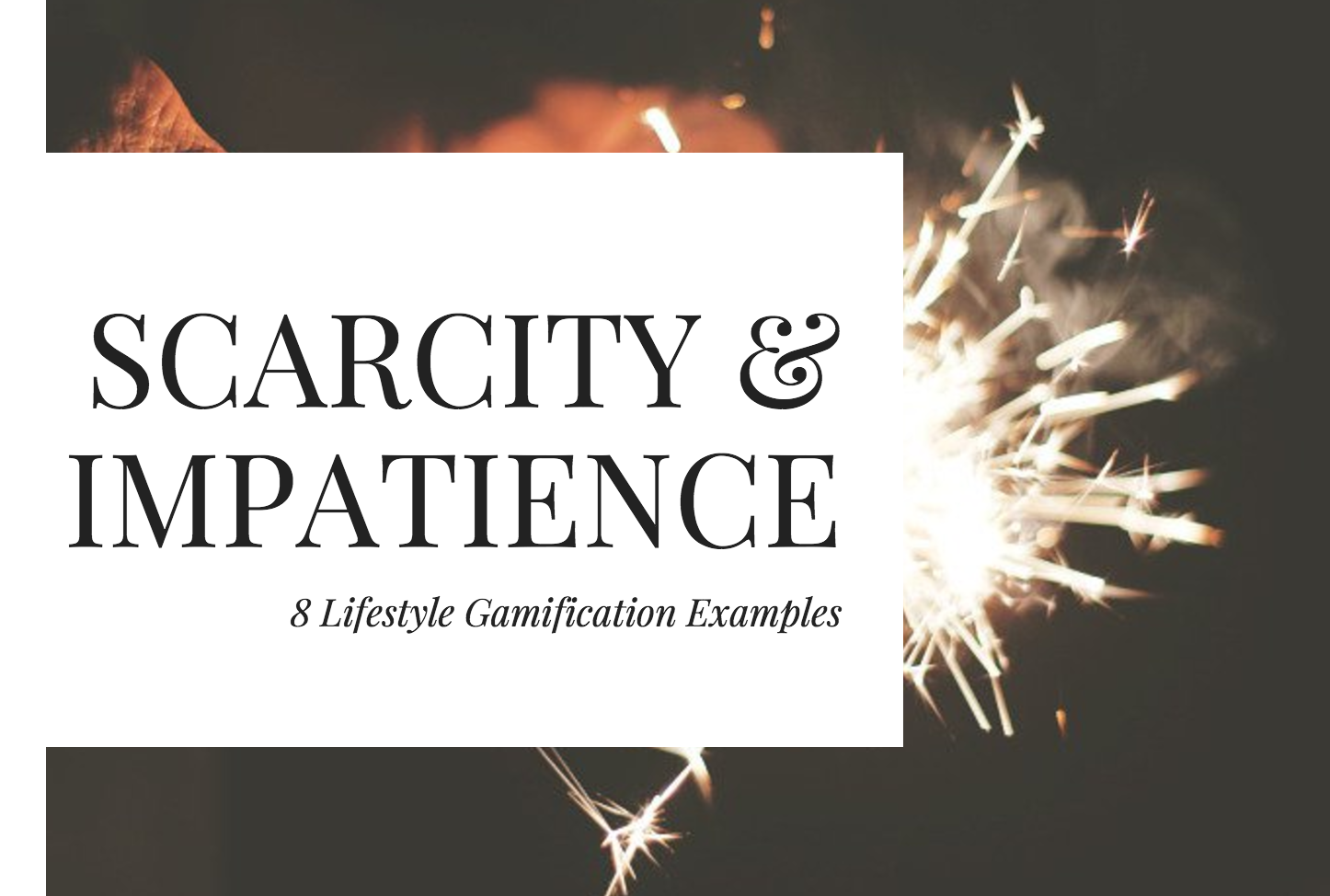Note: this post was written by Jun Loayza.
Ok… Juniper will nap from 9:30am to 10:30am. When she wakes up, I’ll feed her and then we’ll quickly jump in the car and drive to story time at 11:15am. After story time, we’ll head back home for lunch and then playtime until her next nap. During that nap, we’ll unload the dishwasher, organize the laundry, and clean up the apartment. Once she wakes up, we’ll all take a walk to Boba Guys and do playtime at Dolores Park. We should get home by 5pm, give her a bath, and then have her in bed by 6:30pm. Ready?!?!… Let’s do this!
This went on for two weeks straight.
Needless to say, both Kim and I burnt out.

We had time to ourselves after Juniper fell asleep at 7:30pm, but by then we were so exhausted from the day that we could only muster the energy to watch Samantha Bee or Fuller House.
So we decided to call in the reinforcements.

おばあち’s boarded a plane and promised to help us for one week. One week seems like a lot of time, but there were so many things that we had been putting off… the thought of getting started felt painful as the sheer volume of tasks all seemed insurmountable.
I’m admittedly obsessed with productivity. I’ve read the 4 Hour Work Week, read The 7 Habits of Highly Effective People, use Trello religiously to keep my teams organized, use Omnifocus to keep my personal tasks on track, and hit zero inbox everyday.

On the other hand, Kim is a beautiful, creative, magnificent rose petal floating through the air, getting to where she needs to go, but taking her time, doing it her own way. I love this about her. If we were both as driven and hungry as I am, I’m sure that we would drive each other crazy. She gives me balance, patience, and peace.
But, this situation didn’t call for patience. We had おばあち’s for only one week, one week to get all of our stuff done.
A natural, take charge attitude would be to move ahead with no plan and see how much we could get done, but I knew better than that. If we truly wanted to make this week effective, we would need to chart our course and plan ahead.
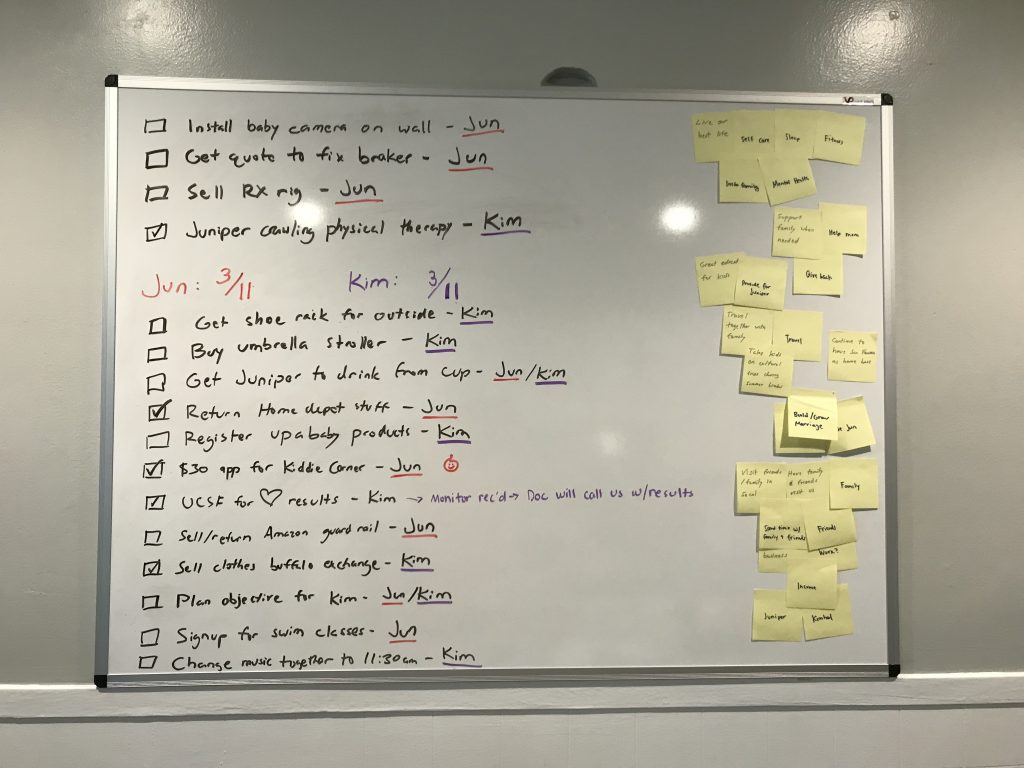
1. We started off with a task list (CD2)
Our starting point was to use whiteboards to list out ALL of the important tasks — just a complete brain dump. Anything and everything went up. We then reviewed our list, consolidated, prioritized, and erased tasks we felt weren’t important.
We ended up with 11 (and Kim later 12) important objectives.
Why this drives human behavior: A task list is a tried-and-true way to motivate people to accomplish things. Each check box feels like a small victory (a small shot of endorphins to your brain each time you mark one as complete).
2. We then assigned an owner to each task (CD4)
We assigned one owner for each task (we did have a couple of tasks that we shared, but as you’ll later see, that was a mistake).
Why this drives human behavior: Assigning the name next to the tasks made us feel ownership of it, that we accepted full responsibility to get it done. I underlined our names in different colors to clearly differentiate the owner and feel further ownership for each objective.
3. We added a scorecard to compete against each other (CD5)
This one was a huge driver for us.
Using big letters and using our designated colors, we put a scorecard for all to see on the whiteboard (and by for-all-to-see, I mean おばあち’s and Juniper).
It got very competitive. As soon as I checked off a task and updated my scorecard, Kim would jump up and exclaim, “No way!”, and she would hustle to complete her next few tasks so that she wouldn’t be publicly losing.
Why this drives human behavior: Making the score visible to the entire household made it so that our victories and failures would be public. Because we didn’t want to look bad, we were driven extra hard to at least keep pace with each other.
4. We added some fun creativity by drawing a cute picture every time we completed an objective (this was 100% Kim’s idea) (CD3)

The process was naturally competitive, but this added a much needed fun element to it. We both looked forward to the other person completing tasks so that we could see what fun drawings we would come up with.
Definitely put a lot of smiles on our faces.
Why this drives human behavior: Adding a dash of spontaneity, creativity, and fun made the process feel less like a chore and more like a collaborative exercise that we enjoyed together (CD7).
5. We gave ourselves a deadline of one week to complete our objectives (CD6)
Although this gave us little room for procrastination, somehow we still managed to wait until the last day to complete many of our objectives (we completed at least 40% of our objectives on the last day).
Why this drives human behavior: Scarcity drives action. When you shop on Amazon and add something to your cart, you may save it to buy for later. But, if you add the item to your cart and see that there is only 1 item left in stock, all of a sudden you feel pressure — “If I don’t buy it now, I may miss the opportunity.”
The one week deadline provided us with the scarcity to take action with a sense of urgency.
And the winner was…
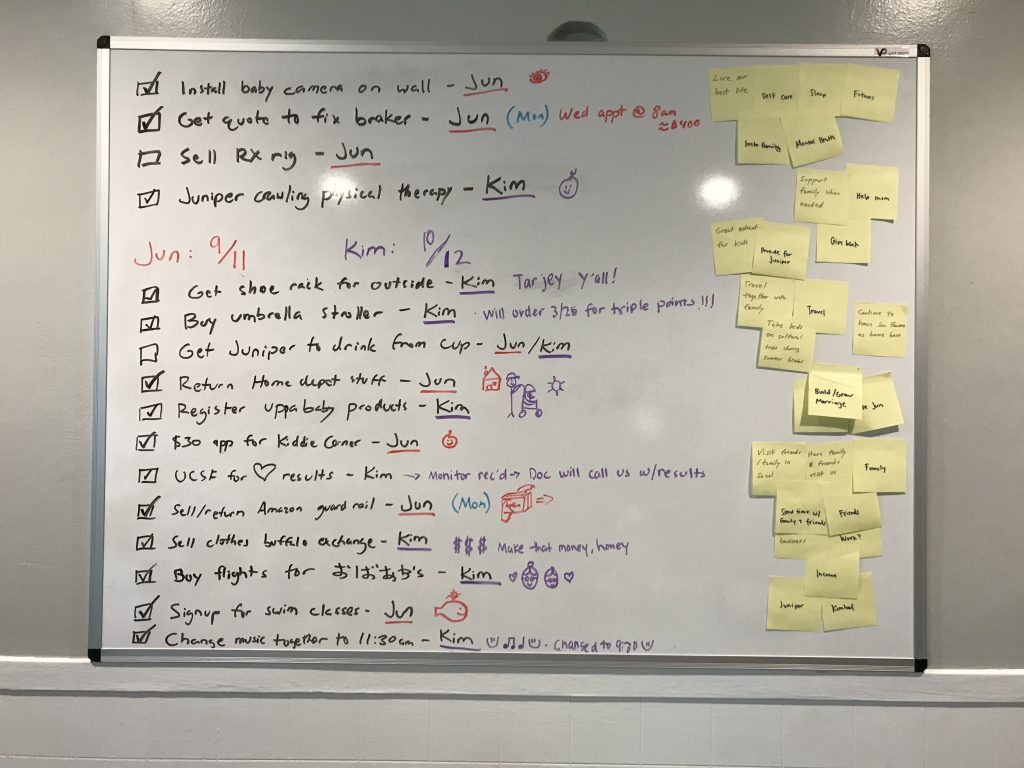
Although Kim beat me, it was truly a fun experience that we’ll do again in the future.
Here are some interesting lessons we learned throughout the process:
A) Set your objectives from the start, but leave room to revise throughout the process
At the very beginning, we did our best to identify our most important objectives. As we began our work, we gained new insights, demanding that we reassess and modify objectives.
We gave ourselves a rule: we had the flexibility to modify objectives as long as we had agreement from the other person.
B) Objectives with two owners don’t get done
We completely ignored the objectives with two owners, expecting the other person to get it done.
Let this be a lesson: an objective must have only one owner.
C) Sometimes the drive to complete a task worked too well
Kim was maniacally driven by this whiteboard, to the point where I felt a Jedi mind trick had been placed on her.
She would say things like, “I’ll do the dishes if I can add it to the whiteboard and get a checkmark.”
While this method worked well for a bootcamp approach (1-week to get things done), I believe for overall healthy living, it’s important to focus on longterm values as oppose to short-term tasks.
D) Procrastination happens even with a short deadline
Even though we only had a week to complete our objectives, we still waited to the very end for the majority of our tasks.
I would definitely do this again, but only for a specific purpose when time is of the essence.
How about you Kim?
Surprisingly, I had a lot of fun competing with Jun and it felt so good to get these tasks done. Some of which had been on the back burner for 3 years i.e. post my wedding dress for sale! While I normally live my personal life with no to-do lists, I really enjoyed the dual list with Jun. We were able to work on the tasks along side each other knowing that these were the priorities for the week. It is also important to note that the winner received a day to sleep in, which was extra motivation for this sleep-deprived mama.
This post is part of the build up towards the upcoming book that Yu-kai Chou and Jun Loayza are co-writing: 10,000 Hours of Play. Research has shown that it takes 10,000 hours to master anything. 10,000 Hours of Play is about how to use Gamification and behavioral economics to have fun and play your way to mastery.


